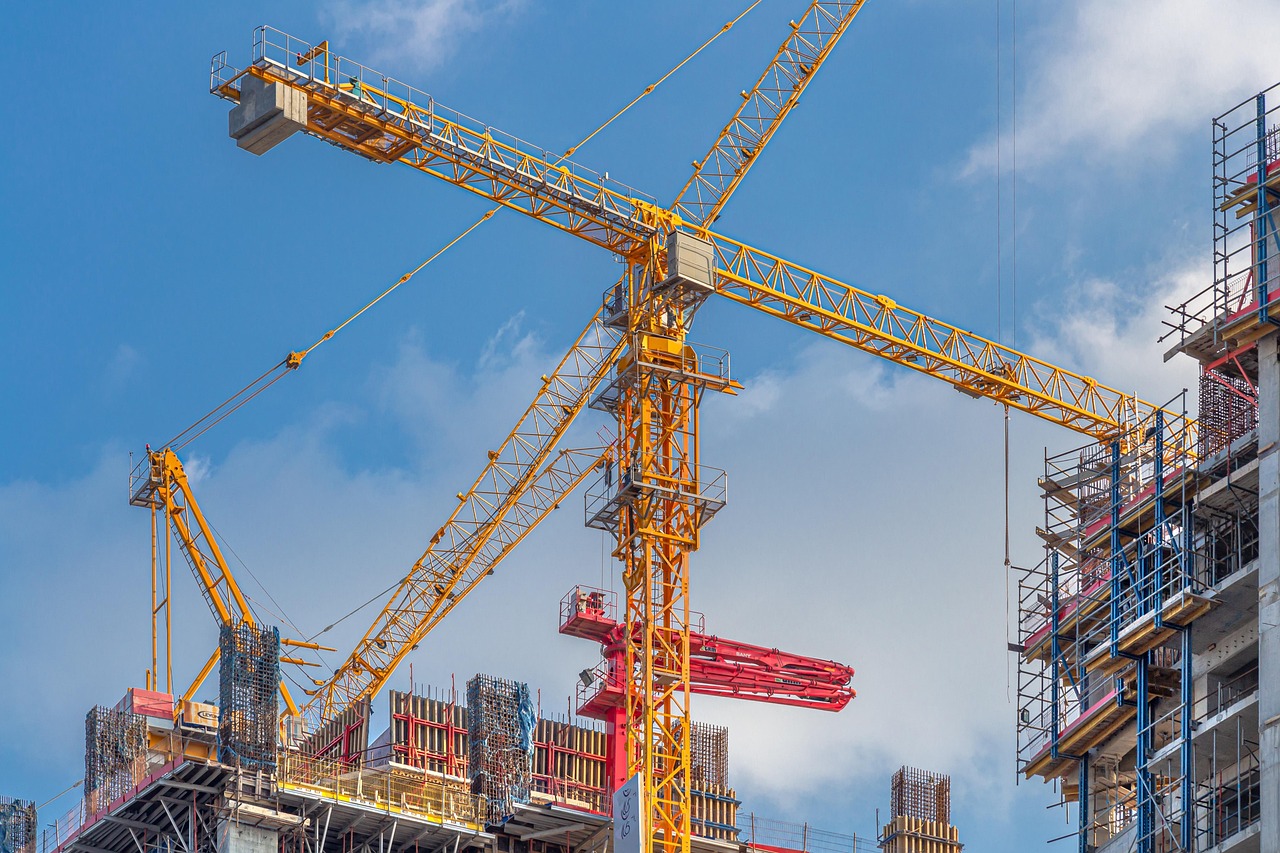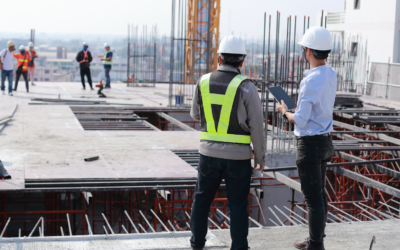Planning a construction project can feel overwhelming, especially if you’ve never managed one before. Whether you’re developing commercial office space, renovating an existing facility, or building new infrastructure, understanding the fundamentals of construction project management is crucial for success.
The construction industry has evolved significantly from its traditional roots. What once focused solely on erecting buildings now encompasses complex project delivery methods, sophisticated planning tools, and integrated management approaches. Modern construction projects require careful coordination of multiple stakeholders, adherence to strict regulatory requirements, and strategic implementation of project management skills to ensure successful outcomes.
This comprehensive guide will walk you through the essential steps every construction project owner should know, from initial planning to final inspection. You’ll discover how professional construction management can save time and money while ensuring quality results that meet your specific business objectives.
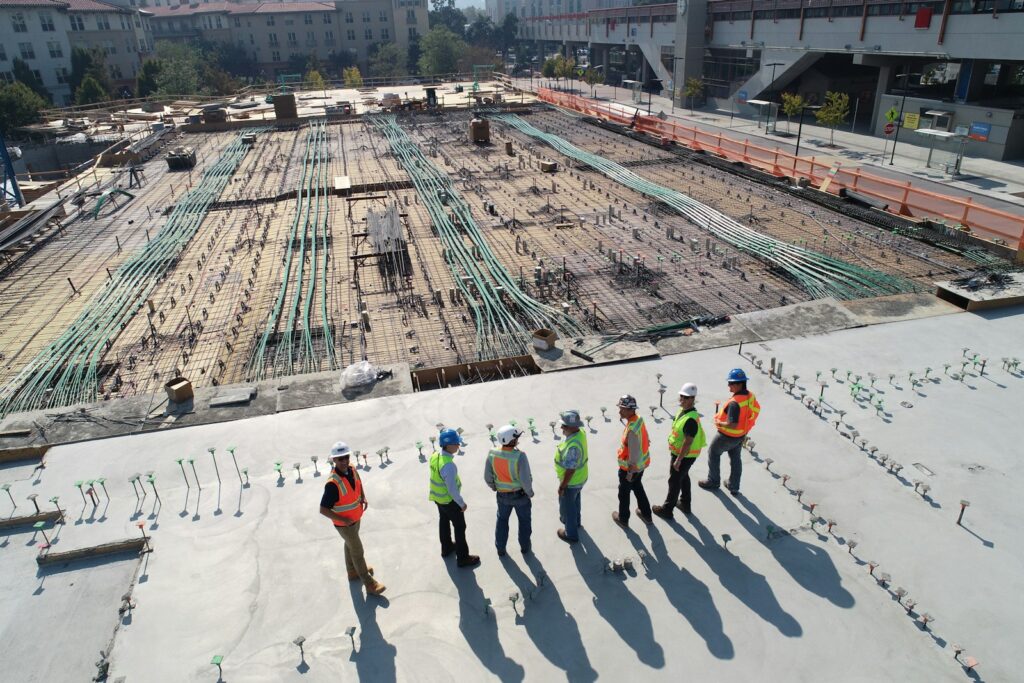
Photo by Scott Blake on Unsplash
Understanding Construction Project Types
Before diving into project management specifics, it’s important to understand the various types of construction projects you might encounter. Each type requires different approaches, skill sets, and regulatory considerations.
Commercial Construction
Commercial construction encompasses office buildings, retail spaces, restaurants, and other business facilities. These projects often involve complex building systems, specialized equipment, and strict compliance with accessibility standards and fire resistance ratings. Project managers must coordinate with multiple trades while maintaining business operations if the work involves existing structures.
Residential Construction
Residential projects include single-family homes, apartments, condominiums, and senior living facilities. These projects focus on creating comfortable living spaces while meeting local building codes and safety requirements. Heavy timber construction, standard coding systems, and fire resistance considerations are particularly important for multi-family residential developments.
Infrastructure Projects
Infrastructure construction involves roads, bridges, utilities, and public facilities. These large-scale projects require extensive coordination with government agencies, consideration of public safety, and specialized knowledge of engineering requirements. Infrastructure projects often involve multiple phases and can significantly impact community operations during construction.
Institutional Construction
Educational institutions, healthcare facilities, religious buildings, and government structures fall under institutional construction. These projects require specialized knowledge of industry-specific regulations, accessibility requirements, and operational needs. For example, healthcare facilities need specific fire resistance ratings and specialized building materials to ensure patient safety.

Photo by Daniel McCullough on Unsplash
Construction Project Management: The Foundation of Success
Effective construction project management serves as the backbone of any successful building project. A skilled construction project manager coordinates all aspects of the construction process, from initial planning through final inspection.
The Role of a Construction Project Manager
A construction project manager oversees project tasks, manages project stakeholders, and ensures that work progresses according to the project schedule. They utilize project management software to track progress, manage budgets, and coordinate with construction professionals across all trades. Their expertise in technical aspects of construction helps prevent costly delays and ensures quality control throughout the process.
Essential Project Management Skills
Successful construction management requires a combination of technical knowledge and leadership abilities. Key skills include understanding construction contracts, reading construction plans, managing resource allocation, and maintaining clear communication with all project stakeholders. Experience with building information modeling (BIM) and project management software has become increasingly important as the industry embraces digital tools.

Photo by taro ohtani on Unsplash
Key Steps for Construction Project Success
Project Planning: Building Your Foundation
Effective project planning sets the stage for everything that follows. This phase involves defining clear objectives, assembling your project team, and establishing a realistic budget.
Defining Project Objectives
Start by clearly articulating what you want to achieve. Are you expanding office space to accommodate growth? Building a new facility to improve operational efficiency? Your objectives will guide every subsequent decision and help your team stay focused on desired outcomes.
Assembling Your Project Team
Your project team should include construction professionals with relevant experience in your project type. This typically includes architects, engineers, construction firms, and specialized consultants. When selecting team members, consider their experience with similar projects, their understanding of local building codes, and their ability to work collaboratively.
Budget Development
Creating accurate estimates requires input from industry experts familiar with current building materials costs, labor rates, and local market conditions. Your budget should include contingencies for unexpected issues and account for potential changes in project scope. Professional construction management can help ensure your budget reflects realistic costs and timelines.
Design Phase: Bringing Vision to Reality
The design phase transforms your objectives into detailed construction plans. This process typically involves conceptual design, schematic design, and detailed construction drawings.
Work Breakdown Structure Development
A Work Breakdown Structure (WBS) is a deliverable-oriented hierarchical decomposition of the work to be executed by the project team. This tool helps organize project tasks into manageable components and ensures nothing is overlooked during planning or execution.
Building Information Modeling Integration
Building Information Modeling (BIM) creates a digital representation of physical and functional characteristics of your facility. This technology helps identify potential conflicts before construction begins, improves coordination among trades, and provides valuable data for facility management after project completion.
Construction Phase: Managing the Build
Once construction begins, focus shifts to site management, quality control, and maintaining project momentum according to your established schedule.
Site Management and Safety
Effective job site management ensures work progresses safely and efficiently. This includes coordinating multiple types of construction activities, managing deliveries of building materials, and maintaining clear communication among all trades working on site.
Quality Control and Progress Monitoring
Regular inspections and progress monitoring help identify issues before they become costly problems. Using tools like Gantt charts to track activity duration against planned schedules helps keep projects on track and identifies when adjustments are needed.
Managing Project Delivery
Different project delivery methods offer various advantages depending on your specific needs. Traditional design-bid-build approaches provide clear cost control, while design-build methods can accelerate schedules and improve coordination between design and construction teams.
Post-Construction: Ensuring Long-term Success
The construction process doesn’t end when the building is complete. Proper project closeout and ongoing maintenance planning are essential for long-term success.
Final Inspection and Commissioning
Thorough final inspections ensure all work meets specifications and complies with building codes. This process includes testing building systems, verifying fire resistance ratings, and confirming that all safety systems function properly.
Warranty and Maintenance Planning
Establishing clear warranty terms and maintenance schedules helps protect your investment over time. Your construction team should provide detailed information about building systems, maintenance requirements, and warranty coverage for different components.
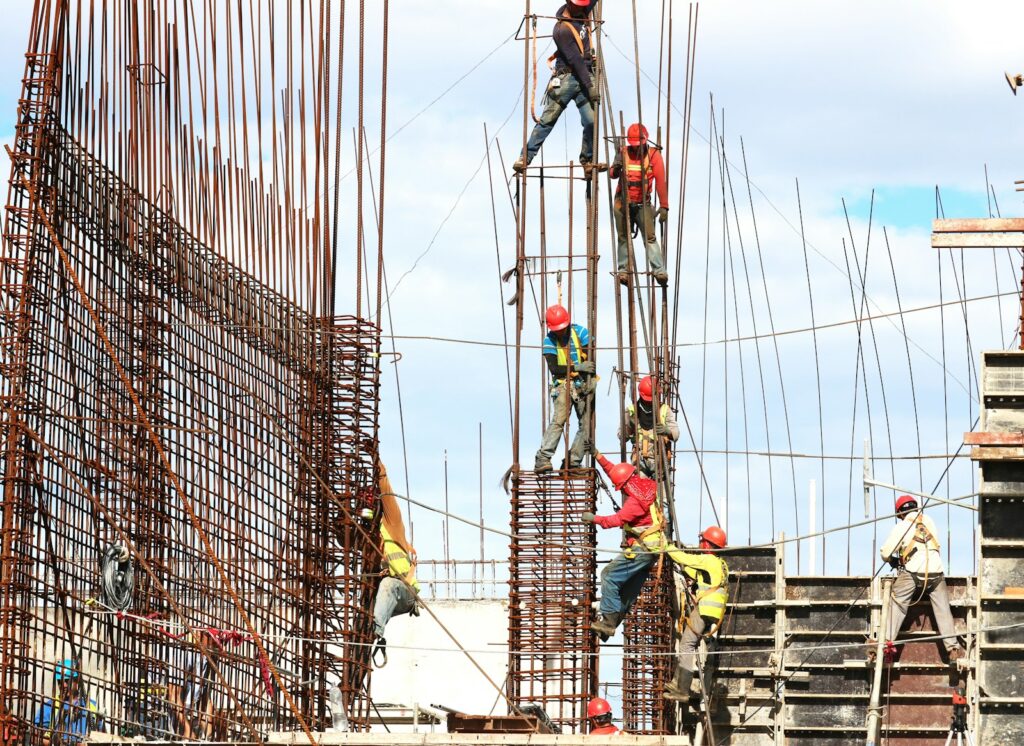
Photo by Josue Isai Ramos Figueroa on Unsplash
Benefits of Professional Construction Management
Working with experienced construction professionals offers significant advantages that can more than offset their fees through improved project outcomes.
Cost Control and Budget Management
Professional construction managers bring experience with accurate estimates, value engineering opportunities, and change order management. Their industry knowledge helps identify potential cost savings and avoid expensive mistakes that can derail project budgets.
Risk Mitigation
Construction projects involve numerous risks, from weather delays to regulatory changes to material availability issues. Experienced project managers anticipate potential problems and develop contingency plans to minimize their impact on project schedules and budgets.
Quality Assurance
Professional construction management ensures work meets industry standards and client expectations. This includes coordinating inspections, managing quality control processes, and ensuring all work complies with applicable codes and regulations.

Photo by Anemone123 on Pixabay
The Design-Build Advantage
Design-build project delivery offers unique benefits that can significantly improve project outcomes for many owners. This approach integrates design and construction services under a single contract, creating clear accountability and improved coordination.
South Coast Improvement Company’s design-build approach eliminates conflicts between architects and builders that often leave clients caught in the middle. By providing single-source responsibility for both design and construction, this method creates streamlined communication and faster project delivery. The company’s 90% year-to-year repeat business rate demonstrates the effectiveness of this integrated approach.
Technology and Modern Construction Management
Modern construction projects benefit significantly from advanced project management software and digital tools. These technologies improve coordination, reduce errors, and provide better visibility into project progress.
Project Management Software
Contemporary project management software helps track project tasks, manage schedules, and coordinate communication among project stakeholders. These tools provide real-time visibility into project status and help identify potential issues before they impact schedules or budgets.
Information Modeling and Digital Coordination
Building information modeling creates comprehensive digital representations of projects that improve coordination and reduce conflicts during construction. This technology helps identify potential problems during design phases when changes are less expensive to implement.
Choosing the Right Construction Partner
Selecting the right construction firm significantly impacts your project’s success. Look for companies with relevant experience, strong safety records, and proven track records of completing projects on time and within budget.
Consider firms that offer integrated services and have experience with your specific project type. Companies with long-term client relationships and high repeat business rates often provide superior service and outcomes compared to lowest-bid contractors.
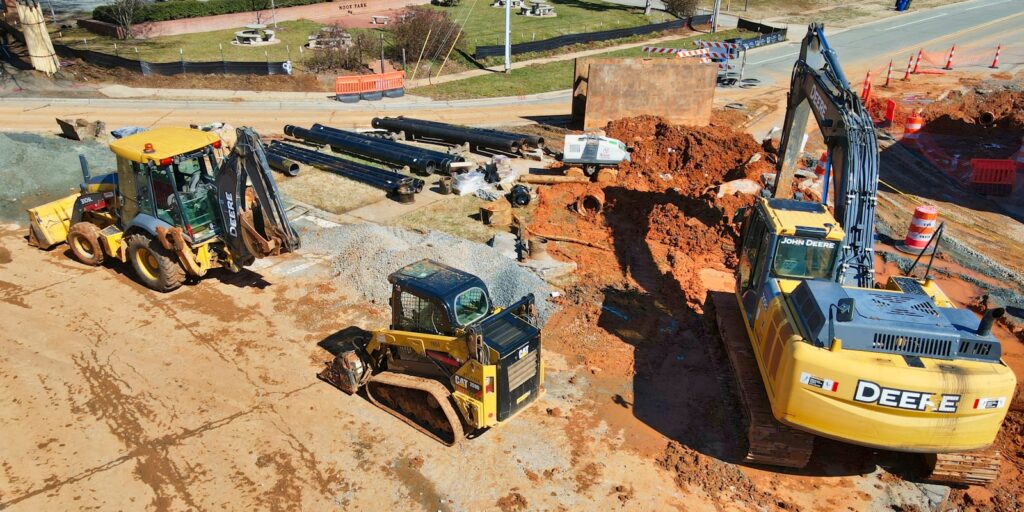
Photo by Gene Gallin on Unsplash
Your Next Steps to Construction Success
Successful construction projects require careful planning, experienced management, and clear communication among all stakeholders. By understanding these key steps and working with qualified professionals, you can achieve your construction objectives while minimizing risks and maximizing value.
Ready to move forward with your construction project? South Coast Improvement Company’s experienced team can help guide you through every phase of your project, from initial planning through final completion. Our design-build approach eliminates conflicts and creates clear accountability for both design and construction outcomes.
Contact South Coast Improvement today to discuss your construction project needs and discover how our integrated approach can deliver superior results for your next building project. Visit our website to learn more about our services or download our free guide to successful construction project planning.
Learn More: Construction Project Success for Owners
Ready to lead a successful commercial construction project? Explore these trusted resources to sharpen your strategy—from vision setting and budgeting to risk control and governance.
Vision, Planning & Feasibility
- Campbell Construction – Planning a Successful Commercial Construction Project | Clarifies the owner’s role: define vision, conduct site/site-permit planning, assemble the right team, budget wisely, and build in contingency.
- P‑C Construction Blog – Essential Steps for Commercial Construction Planning | Emphasizes starting with clear objectives, feasibility studies, and a capable, collaborative team.
- Gidel & Kocal – Mastering Planning for Commercial Construction Success | Breaks down key phases: scope/initiation, constructability, site prep, design/approvals, and procurement.
Budgeting, Contracts & Cost Control
- NAIOP – How to Plan a Successful Construction Project | Owner-focused advice: secure independent cost estimates, set a firm budget, include “add and delete” design options, and peer-review constructability.
Practical Project Execution
- Trimble Blog – Top Tips for Construction Project Management | Reinforces foundational best practices: plan thoroughly, define roles, phase the project lifecycle, and use modern PM software to streamline execution.
- ConstructConnect – 4 Keys to Effective Construction Project Management | Elevates success through detailed planning, strong communication, active monitoring, and stakeholder alignment.
- Northern Construction – Stages of a Construction Project | Describes Design-Bid-Build and Design-Build models with clear phase distinctions: design, pre-construction, procurement, construction, and commissioning.
View Our Work
The Overlook – Masonic Health System
"We’re honored to have partnered with The Overlook on this transformative initiative. Our team brought specialized expertise in working within occupied senior living communities, delivering a seamless renovation that aligns with The Overlook’s exceptional standards of...
Hamilton Wenham
Their team was collaborative, responsive, and committed to our shared vision for this space, -Eric Tracy Superintendent, Hamilton-Wenham Regional School District We partnered with the Hamilton-Wenham Regional School District to deliver a brand-new athletic building...
